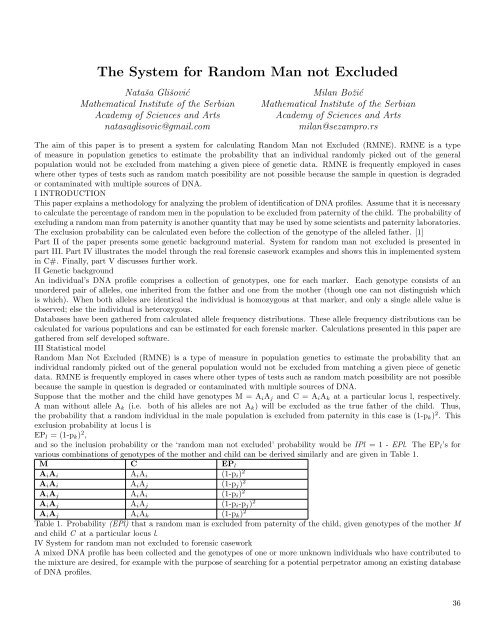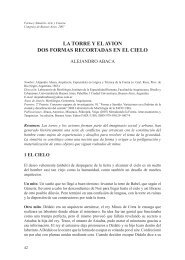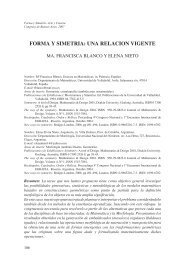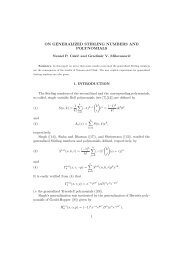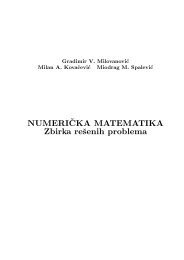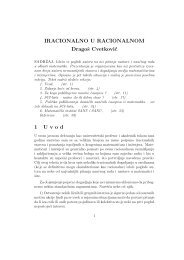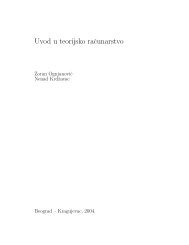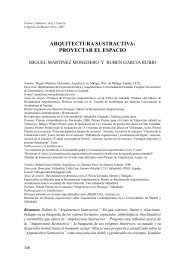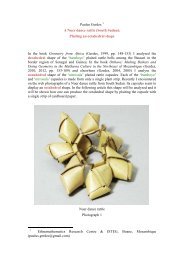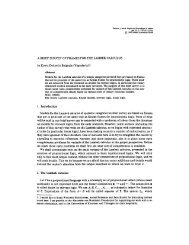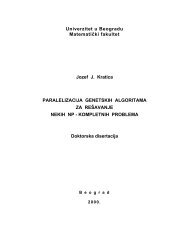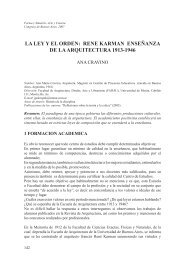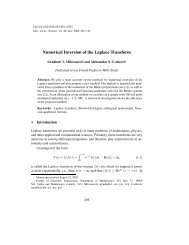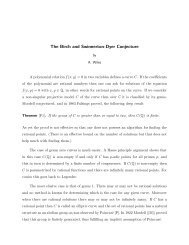Knjiga apstrakata - Mathematical Institute of the Serbian Academy of ...
Knjiga apstrakata - Mathematical Institute of the Serbian Academy of ...
Knjiga apstrakata - Mathematical Institute of the Serbian Academy of ...
You also want an ePaper? Increase the reach of your titles
YUMPU automatically turns print PDFs into web optimized ePapers that Google loves.
The System for Random Man not ExcludedNataša Glišović<strong>Ma<strong>the</strong>matical</strong> <strong>Institute</strong> <strong>of</strong> <strong>the</strong> <strong>Serbian</strong><strong>Academy</strong> <strong>of</strong> Sciences and Artsnatasaglisovic@gmail.comMilan Božić<strong>Ma<strong>the</strong>matical</strong> <strong>Institute</strong> <strong>of</strong> <strong>the</strong> <strong>Serbian</strong><strong>Academy</strong> <strong>of</strong> Sciences and Artsmilan@sezampro.rsThe aim <strong>of</strong> this paper is to present a system for calculating Random Man not Excluded (RMNE). RMNE is a type<strong>of</strong> measure in population genetics to estimate <strong>the</strong> probability that an individual randomly picked out <strong>of</strong> <strong>the</strong> generalpopulation would not be excluded from matching a given piece <strong>of</strong> genetic data. RMNE is frequently employed in caseswhere o<strong>the</strong>r types <strong>of</strong> tests such as random match possibility are not possible because <strong>the</strong> sample in question is degradedor contaminated with multiple sources <strong>of</strong> DNA.I INTRODUCTIONThis paper explains a methodology for analyzing <strong>the</strong> problem <strong>of</strong> identification <strong>of</strong> DNA pr<strong>of</strong>iles. Assume that it is necessaryto calculate <strong>the</strong> percentage <strong>of</strong> random men in <strong>the</strong> population to be excluded from paternity <strong>of</strong> <strong>the</strong> child. The probability <strong>of</strong>excluding a random man from paternity is ano<strong>the</strong>r quantity that may be used by some scientists and paternity laboratories.The exclusion probability can be calculated even before <strong>the</strong> collection <strong>of</strong> <strong>the</strong> genotype <strong>of</strong> <strong>the</strong> alleled fa<strong>the</strong>r. [1]Part II <strong>of</strong> <strong>the</strong> paper presents some genetic background material. System for random man not excluded is presented inpart III. Part IV illustrates <strong>the</strong> model through <strong>the</strong> real forensic casework examples and shows this in implemented systemin C#. Finally, part V discusses fur<strong>the</strong>r work.II Genetic backgroundAn individual’s DNA pr<strong>of</strong>ile comprises a collection <strong>of</strong> genotypes, one for each marker. Each genotype consists <strong>of</strong> anunordered pair <strong>of</strong> alleles, one inherited from <strong>the</strong> fa<strong>the</strong>r and one from <strong>the</strong> mo<strong>the</strong>r (though one can not distinguish whichis which). When both alleles are identical <strong>the</strong> individual is homozygous at that marker, and only a single allele value isobserved; else <strong>the</strong> individual is heterozygous.Databases have been ga<strong>the</strong>red from calculated allele frequency distributions. These allele frequency distributions can becalculated for various populations and can be estimated for each forensic marker. Calculations presented in this paper arega<strong>the</strong>red from self developed s<strong>of</strong>tware.III Statistical modelRandom Man Not Excluded (RMNE) is a type <strong>of</strong> measure in population genetics to estimate <strong>the</strong> probability that anindividual randomly picked out <strong>of</strong> <strong>the</strong> general population would not be excluded from matching a given piece <strong>of</strong> geneticdata. RMNE is frequently employed in cases where o<strong>the</strong>r types <strong>of</strong> tests such as random match possibility are not possiblebecause <strong>the</strong> sample in question is degraded or contaminated with multiple sources <strong>of</strong> DNA.Suppose that <strong>the</strong> mo<strong>the</strong>r and <strong>the</strong> child have genotypes M = A i A j and C = A i A k at a particular locus l, respectively.A man without allele A k (i.e. both <strong>of</strong> his alleles are not A k ) will be excluded as <strong>the</strong> true fa<strong>the</strong>r <strong>of</strong> <strong>the</strong> child. Thus,<strong>the</strong> probability that a random individual in <strong>the</strong> male population is excluded from paternity in this case is (1-p k ) 2 . Thisexclusion probability at locus l isEP l = (1-p k ) 2 ,and so <strong>the</strong> inclusion probability or <strong>the</strong> ‘random man not excluded’ probability would be IPl = 1 - EPl. The EP l ’s forvarious combinations <strong>of</strong> genotypes <strong>of</strong> <strong>the</strong> mo<strong>the</strong>r and child can be derived similarly and are given in Table 1.M C EP lA i A i A i A i (1-p i ) 2A i A i A i A j (1-p j ) 2A i A j A i A i (1-p i ) 2A i A j A i A j (1-p i -p j ) 2A i A j A i A k (1-p k ) 2Table 1. Probability (EPl) that a random man is excluded from paternity <strong>of</strong> <strong>the</strong> child, given genotypes <strong>of</strong> <strong>the</strong> mo<strong>the</strong>r Mand child C at a particular locus l.IV System for random man not excluded to forensic caseworkA mixed DNA pr<strong>of</strong>ile has been collected and <strong>the</strong> genotypes <strong>of</strong> one or more unknown individuals who have contributed to<strong>the</strong> mixture are desired, for example with <strong>the</strong> purpose <strong>of</strong> searching for a potential perpetrator among an existing database<strong>of</strong> DNA pr<strong>of</strong>iles.36


